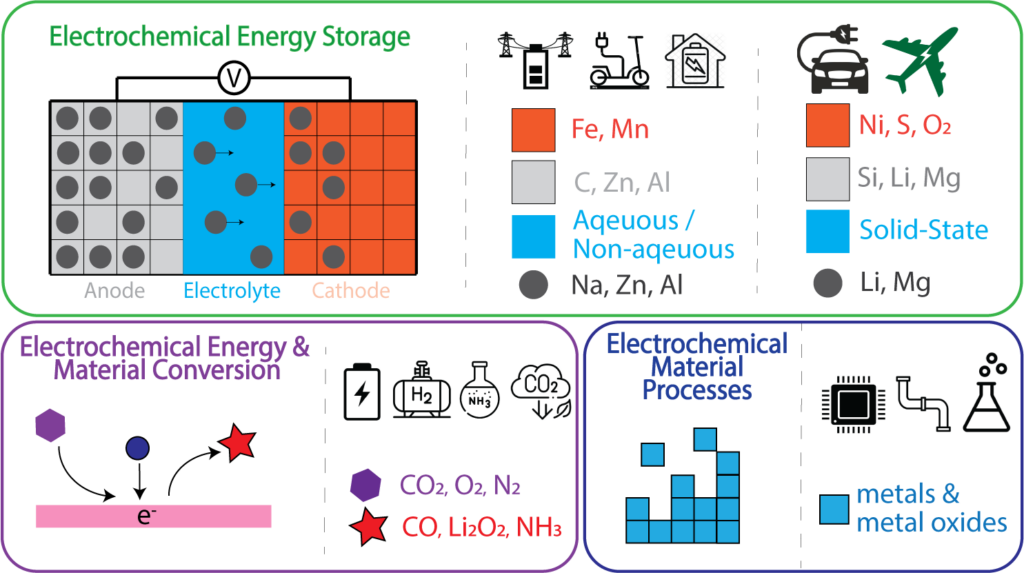
Associate Professor
Contact Information
Education
B.S. Chemical Engineering – Middle East Technical University, 2010
Ph.D. Chemical Engineering – Iowa State University, 2014
Post-doctoral Researcher in Material Science – University of Illinois at Urbana-Champaign, 2018
Research Interests
Electrochemistry plays an important role to achieve carbon neutrality and sustainable green energy in modern society. In this aspect, our group focuses on developing energy storage, energy conversion and material processes.
- Electrochemical Energy Storage: Batteries enable the generation of electricity on demand and offer an effective way to store electricity produced from renewable energy sources. Diversification of the battery chemistry is a must for the transition towards cleaner renewable energy sources. Our group investigates various battery chemistries for stationary energy storage systems , portable electronics and high-energy demanding applications such as EVs.
- Electrochemical Energy & Material Conversion: Hydrogen (H2) is the most lightweight element in the periodic table with a giant role on life and energy on Earth. Hydrogen fuel cells offer possibilities to replace combustion of fossil fuels for more efficient and cleaner electricity. Hydrogen can also be utilized to convert environmentally pollutant CO2 into useful hydrocarbons. Our group investigates the suitable properties of the electrocatalytic materials for effective electrochemical energy & material conversion by controlling the reactivity of H2.
- Electrochemical Material Process: Steel and cement are the building blocks of modern life but these industries are responsible for almost 7% of global CO2 production annually. Reinvention of the steel and cement production via environmentally-friendly building blocks is a must for sustainable materials and manufacturing technologies. Our group is interested in exploring electrochemical material processing methods for the production of alternative building blocks for steel and cement with smaller carbon-footprints.


